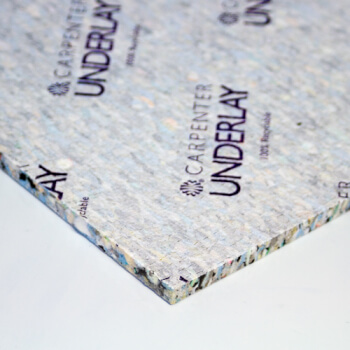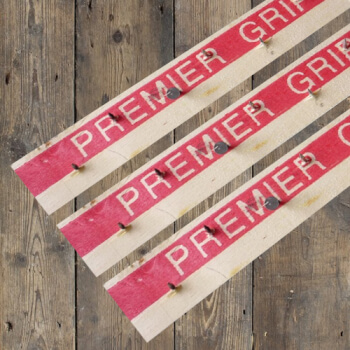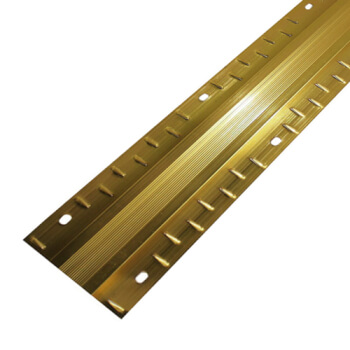Natural Flooring Guide
Here you'll find everything you need to know about the different types of natural floor coverings we stock, including the key materials available, their unique characteristics and things you should consider before purchasing.
If you need any further help, don't hesitate to give our Customer Services team a call on 01332 346 444 or email info@designer-carpet.co.uk.
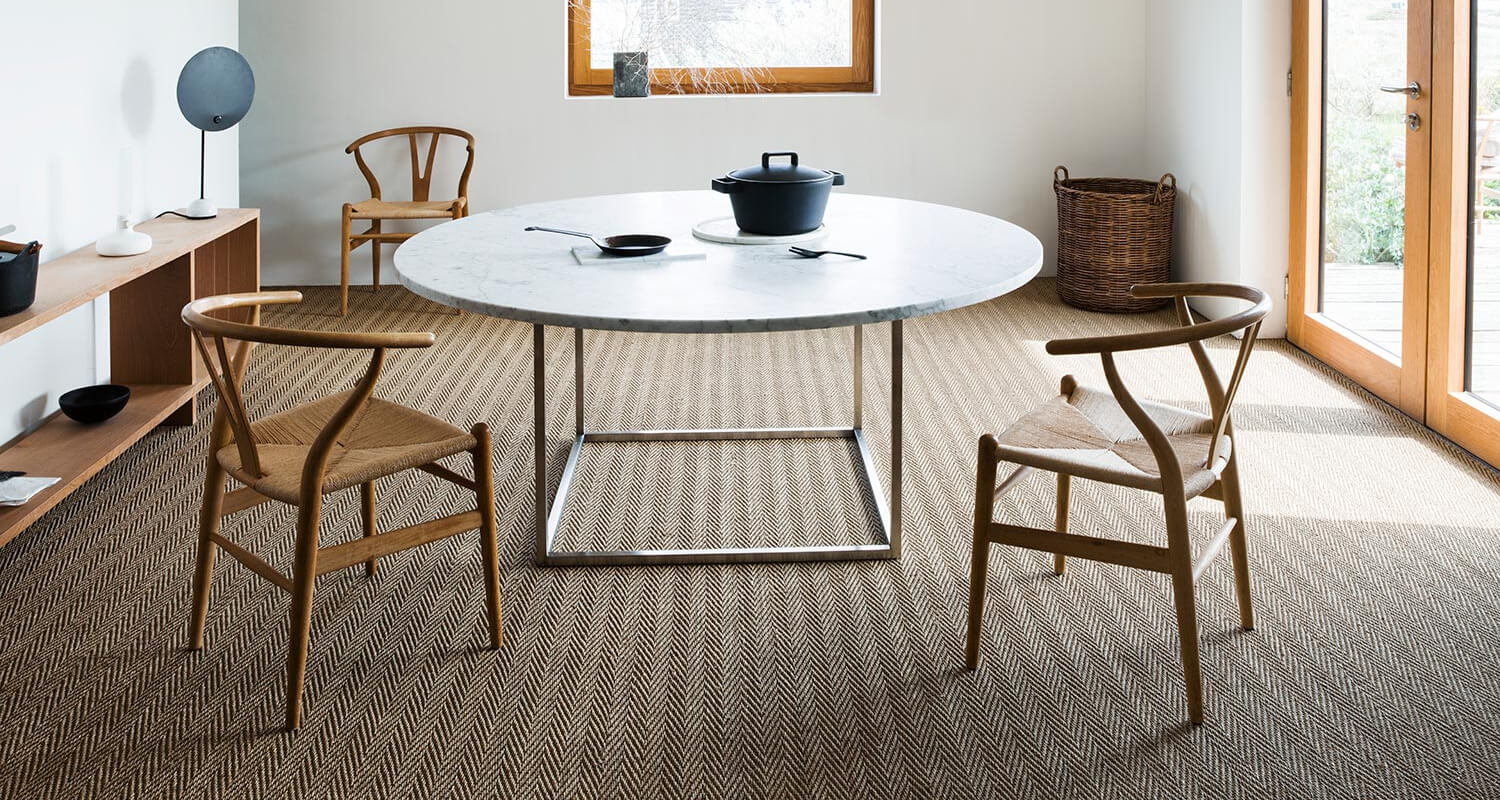
What are natural floor coverings?
When we talk about natural floor coverings, we mean any kind of carpet or rug made from natural fibres. That could be hardwearing grasses or wool, it could be made from plants - if the virgin fibres aren’t man-made, it counts as natural.
Natural materials are chosen for their unique characteristics, and are designed to bring a sense of warmth and organic comfort to your home. Durable, flexible and sustainable, each floor covering in this guide is available in a range of weaves, patterns or colours, meaning there's an option for every space.
Allergy advice
If you need to consider allergies when choosing your new carpet, speak to one of our team who will be happy to try and help. Here’s a quick checklist of things that could affect your decision:
Material: the majority of our natural floor coverings are woven with 100% natural fibres.
Dye: some yarns are treated with dye.
Chemicals: the majority of natural floor coverings are not chemically treated.
Backing: our carpets use a mixture of synthetic and natural latex backings.
Moth-proofing: wool carpets may have been treated to deter moths, increasing their longevity.
Adhesives: sensitivity can occur from the glues used to secure the backing to carpets.
Care & Installation
Natural floor coverings need special treatment when it comes to both fitting and maintenance to ensure they look their best. Make sure you read our natural flooring Care and Installation guides for expert advice on getting the most out of your new carpet.
Know your weaves
Don’t know your basketweave from your bouclé? Consider this your cheat sheet.
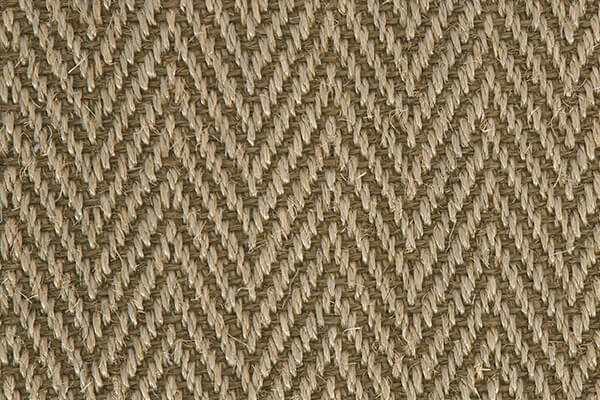
Herringbone
A customer favourite, herringbone is a uniform pattern that uses raised parallel lines to create a strikingly neat zig-zag style.
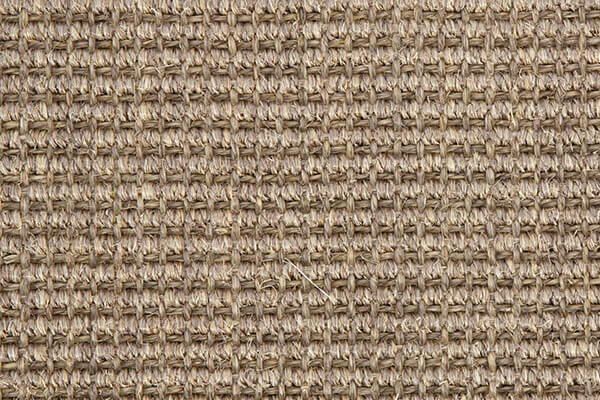
Bouclé
From the French word meaning, ‘to curl’, bouclé features tightly-woven loops of different sizes.
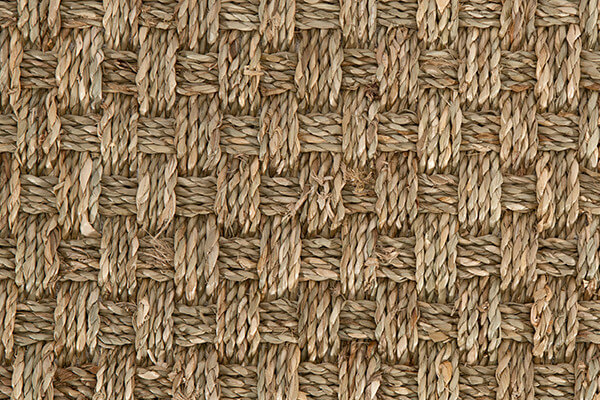
Basketweave
Basketweave layers horizontal (weft) and vertical (warp) threads over one another for a chequerboard-like finish.
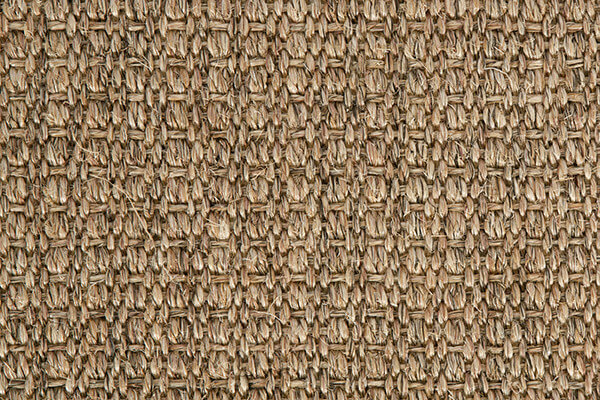
Panama
Like a basketweave but flatter, panama uses loops of different sizes for a more organic feel.
Wool
There’s a reason sheep look so cosy all the time, and it’s wool. Hard-wearing, soft and easy to care for, a wool carpet is an excellent choice for just about every room.
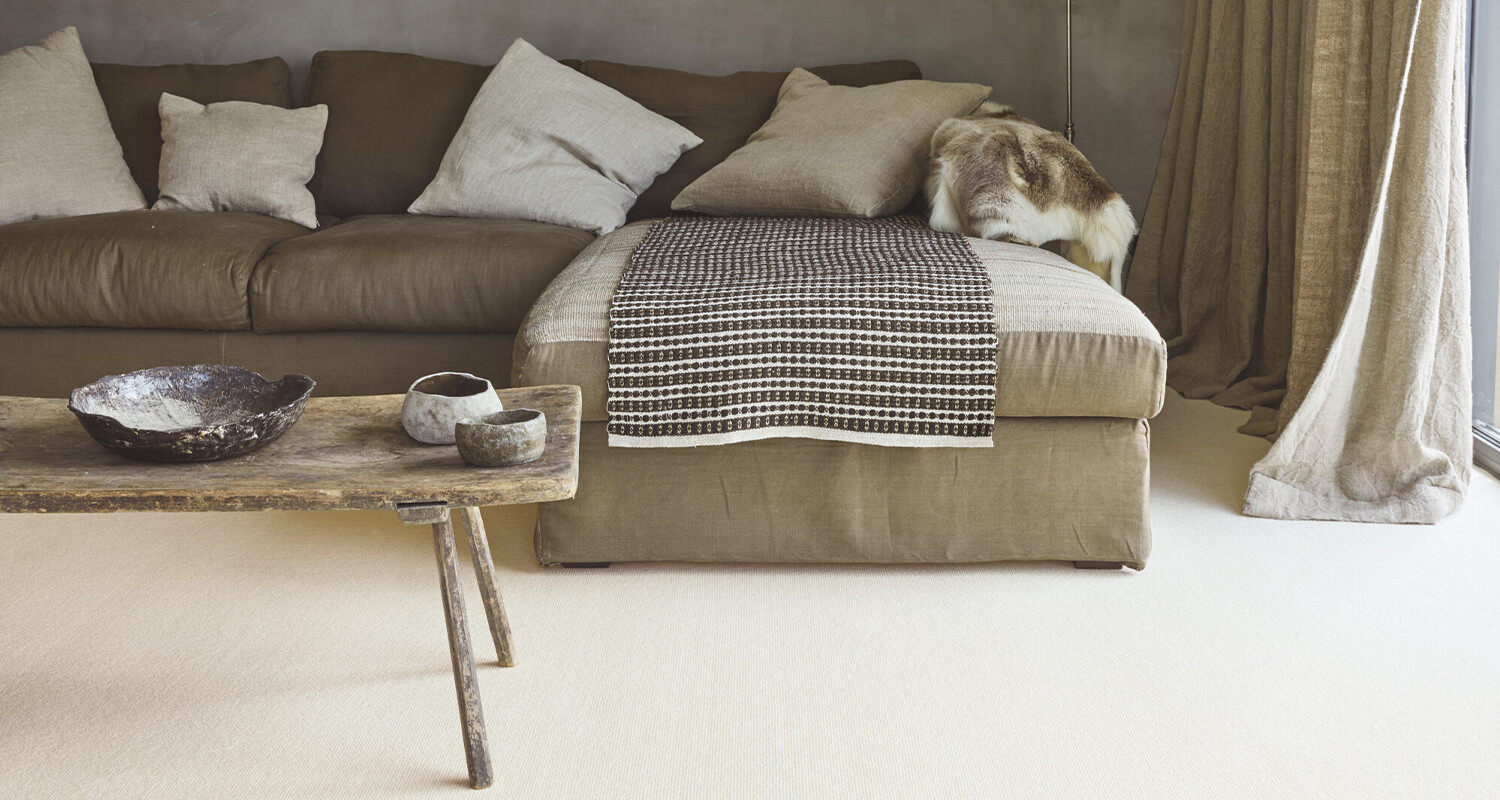 Crucial Trading Wool Biscayne Plain Mascarpone
Crucial Trading Wool Biscayne Plain Mascarpone
How it's made
Believe it or not, people have been using wool to cover floors from as early as 3000BC. Designs might have come a long way since then, but the qualities of the material remain the same, with each fibre as hardworking as ever. Shorn from hardy sheep breeds often located in mountainous areas of Britain and New Zealand, the fleece is washed, brushed, spun and dyed before being woven into a carpet and laid.
Benefits of wool
Built To Last: wool is extremely durable, anti-static and easy to care for. It’s even soil-resistant, so great to use in high-traffic areas.
Colour: colour-fast and easy to dye, wool takes well to every shade, from pastels to eye-popping brights.
Comfortable: as well as being soft and cosy underfoot, wool is temperature regulating, helping to keep things both warm and cool when needed.
Quiet: wool textiles absorb noise, making them ideal for spaces where you need to concentrate or want to relax.
Fire resistant: wool does not burn until it gets to 700°C and will self-extinguish as soon as the source of fire is removed, making it a safe choice for your home.
Renewable: sheep grow a new fleece each year, making wool a sustainable choice. It's also biodegradable and purifies the air of harmful gases, locking them away for up to 30 years.
Where to use wool
Because wool is so durable and easy to care for, it's fine to use in most spaces. However, if you're planning to use a wool carpet in high-traffic areas such as stairs and hallways then investing in a thicker wool carpet will pay dividends as pile height makes a difference to how it wears. Likewise, you could consider an 80/20 wool mix for these areas for added peace of mind.
Need to knows
Lifespan: wool is extremely hardy so floor coverings made from this wonder fibre can last up to 20 years, subject to the amount of use and how well you care for your carpet.
Wool blends: as well as 100% wool designs, we offer wool blends that have been mixed with other naturals like sisal or man-made fibres such as nylon or polypropylene. A mix can give you the best of both worlds, combining all the natural characteristics of wool with the stain-resistant qualities of man-made floor coverings.
Pile height: pile height directly influences the longevity of a wool carpet, so where possible invest in the thickest pile you can. It will pay off in the long run.
Sisal
Taking its name from the agave sisalana plant it’s made from, sisal is versatile, durable and brings a beautiful texture to any scheme.
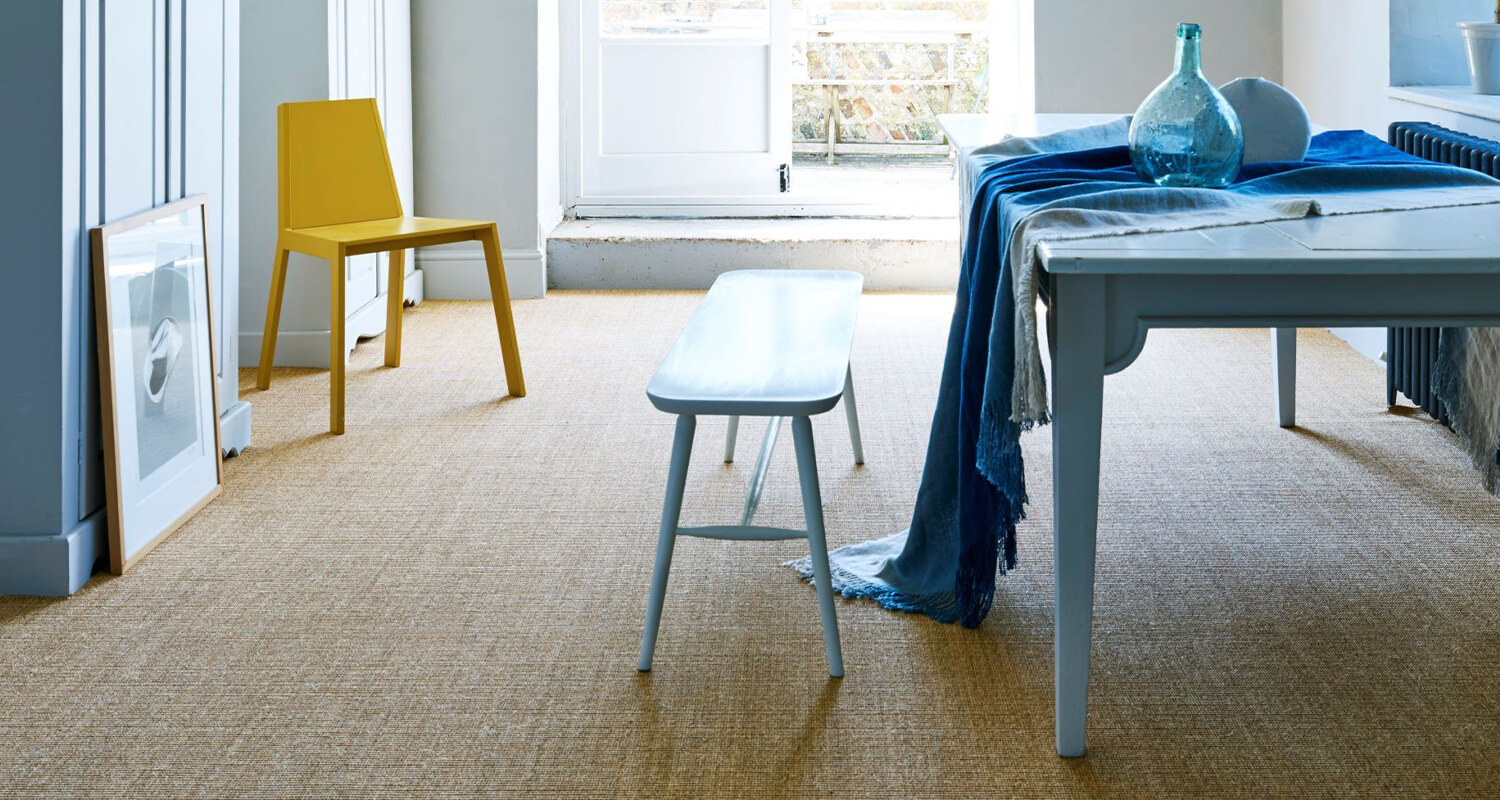 Kersaint Cobb Sisal Mini Boucle
Kersaint Cobb Sisal Mini Boucle
How it's made
Sisal starts out as a spiky-leaved agave plant in warm places like Brazil, China and East Africa. The outer layers of the succulent’s leaves are removed in a process called decortication, and after being thoroughly washed, they’re dried out and graded for quality. Only then will they be spun into the yarns that will be used to weave carpets.
Fun fact: the agave plant is incredibly versatile, and used for producing many things including sweet syrup and even the tequila-like spirit mezcal.
Benefits of sisal
Hard wearing: due to the way sisal is woven, it's extremely tough and therefore able to stand up to regular wear, even in high-traffic areas like stairs.
Full of character: sisal brings character, texture and a rustic feel to any space. It's a unique floor covering that looks stunning and cannot fail to draw compliments.
Environmentally friendly: being a sustainable resource, the environmental impact of sisal floor coverings is low when compared to man-made fibres.
Sensitive: anti-static, non-toxic and antibacterial, sisal is perfect for allergy suffers and those with sensitive skin.
Pest resistant: sisal contains tannins which help to repel dust mites, while it is also naturally moth and rot resistant.
Where to use sisal
This durable floor covering can be used in any room in the house that doesn’t experience regular moisture.
Need to knows
Textures: sisal comes in a variety of different weave styles, with the most popular patterns being herringbone and boucle.
Durability: hard wearing and made to last, a sisal carpet is perfect for most rooms in the house.
Unique: sisal is a natural, organic product, which means there will enevitably be variations in the weave and colour and no two carpets are alike. It's important to embrace this natural charm and character as these are not considered faults.
Colour: while sisal holds most colour extremely well it’s possible that deeper colours may fade in strong sunlight.
Lifespan: expect sisal floor coverings to last up to 8 years, subject to the amount of use and care.
Moisture: sisal is highly absorbent and can shrink when exposed to moisture. Therefore, it should not be used in damp areas or where spills are likely to occur.
Seagrass
Naturally beautiful, stain-resistant and hard-wearing, a seagrass carpet will bring a touch of organic style to your home.
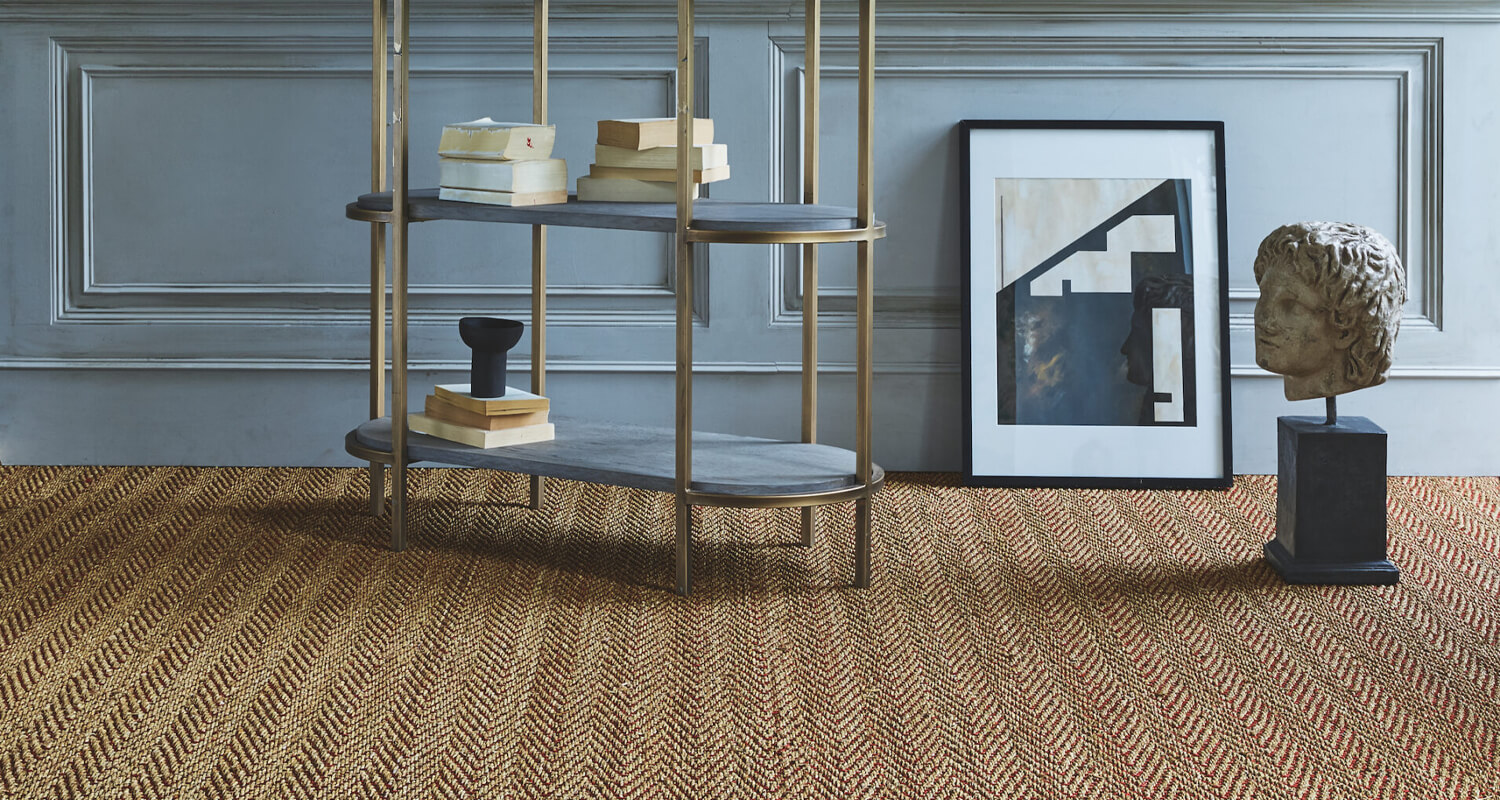 Crucial Trading Seagrass Herringbone Accents
Crucial Trading Seagrass Herringbone Accents
How it's made
You might think from the name that seagrass grows in the sea, but the grasses used here actually grow in paddies (or fields) in the heat of climates like China and Vietnam. At one point in the growing cycle the fields are flooded with briney seawater, hence the name. The plants are then harvested, dried and spun into yarn before being used to make anything from baskets to insulation. Before it’s laid on your floor it gets a durable latex backing and hey presto - it’s a carpet.
Benefits of seagrass
Comfortable: less course and softer than other natural fibres like sisal and coir, seagrass feels softer underfoot and therefore can even be used in relaxing spaces such as bedrooms or living rooms.
Stain resistant: its non-porous nature means seagrass is naturally resistant to staining and moisture.
Environmentally friendly: a sustainable resource that is 100% biodegradable, the environmental impact of seagrass carpet is low when compared to synthetic materials.
Tough: seagrass carpets are extremely durable and hard wearing, making them suitable for high-traffic areas.
Warm: seagrass has excellent insulation properties, helping to keep your rooms warmer and heating costs down.
Sensitive: non-toxic and antibacterial, seagrass is ideal for allergy suffers and those with sensitive skin.
Where to use seagrass
This hard-wearing fibre is tough enough to use in most dry spaces at home, and in some commercial settings too. But in high-traffic areas or under chairs we’d advise that you use extra mats for protection. You should always avoid using seagrass on the stairs, as it can become extremely slippy when wet, or any areas which that are high in moisture, which can cause it to develop mildrew or mould.
Need to knows
Variations: like lots of natural yarns, seagrass creates floor coverings that are completely unique, so expect natural variations within the carpet and between batches. But we consider that part of its natural beauty.
Colour: because it’s so tough, seagrass doesn’t absorb dye, so it’s usually only available in a natural colourway. That said, it is possible to create beautiful patterns using clever weaving techniques, and by mixing in different yarns like sisal.
Slippy: when seagrass gets wet it becomes extremely slippy, which is why it should not be used on stairs. You should take this into consideration when planning which rooms you lay seagrass and try to keep it away from spills and liquids.
Lifespan: expect seagrass floor coverings to last up to 5 years, subject to the amount of use.
Humidity: seagrass floor coverings laid in damp or humid spaces can develop mildew or mould.
Coir
Warm, inviting and extremely hardy, coir is made from coconut husks and woven into a fibrous yarn.
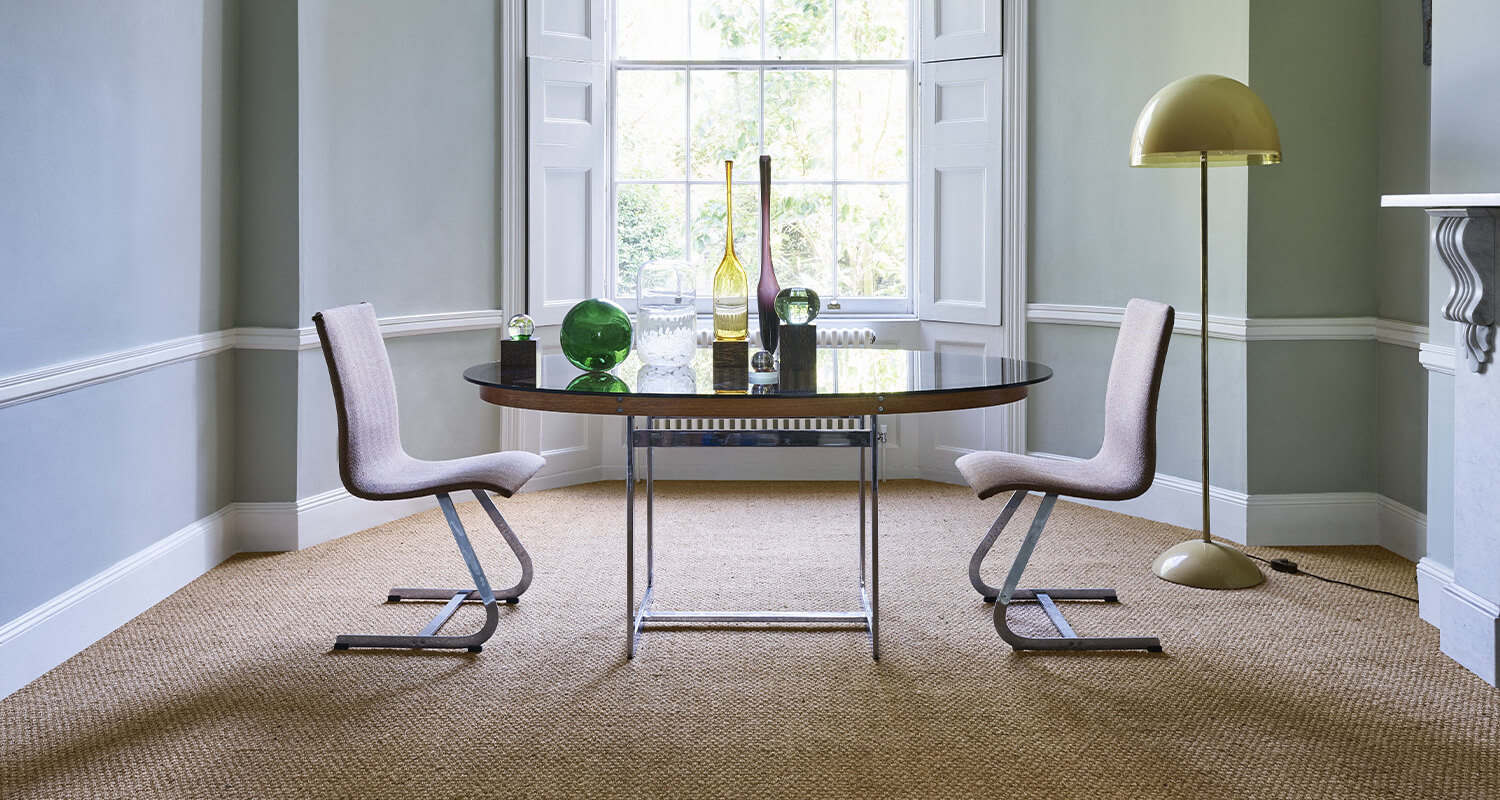 Crucial Trading Coir Luxury
Crucial Trading Coir Luxury
How it's made
One of the industry's most natural floor coverings, coir is made from the rough husks of coconuts. These are softened in water and ground with stones to separate the woody parts, before the fibres are combed through and dried out. Once dry, they’ll be spun into a durable yarn and hand-woven on a loom into door mats and coir carpets.
Benefits of coir
Durability: extremely hard-wearing, coir is on a par with sisal for durability and can withstand repeated use.
Characterful: coir's natural, earthy colouring and rich textured appearance will bring a rustic charm to any space. With it's organic feel it is particularly well suited to areas where you want to 'bring the outside in'.
Cost effective: relatively low processing costs mean that coir is more affordable than other plant fibres. Our range of coir carpets start from as little as £15.99m².
Renewable: coir is a sustainable resource that can be harvested from the same tree's coconuts year after year. The majority of coir production is also done by hand, minimising the environmental impact.
Hides stains: its dark natural colourway and tough, rough texture means coir conceals stains well.
Where to use coir
Because coir is so hardwearing, it’s perfect for use throughout the home and in light-use commercial spaces, but should be avoided in moist or damp spots like bathrooms.
Need to knows
Processing: hand-processed coir is usually higher quality than machine-processed.
Colour: coir is usually left natural or bleached for a lighter shade, and if placed in bright sunlight can revert back to its natural, gingery tone.
Variations: coir is a natural product so you should expect natural variations within the floor covering and between batches. These are not imperfections or faults and instead they should be seen as part of its unique charm.
Comfort: coir is quite an abrasive natural fibre, which is why it's often used for door mats. So if you require something comfortable underfoot then it would be wise to consider other natural floor coverings such as jute or seagrass.
Lifespan: expect coir floor coverings to last up to 5 years, subject to the amount of use and care.
Moisture: coir can absorb water under humid conditions so it is advisable to avoid areas of high moisture.
Jute
With its soft feel and natural finish, jute is a great floor covering for those spaces we want to make comfy and cosy.
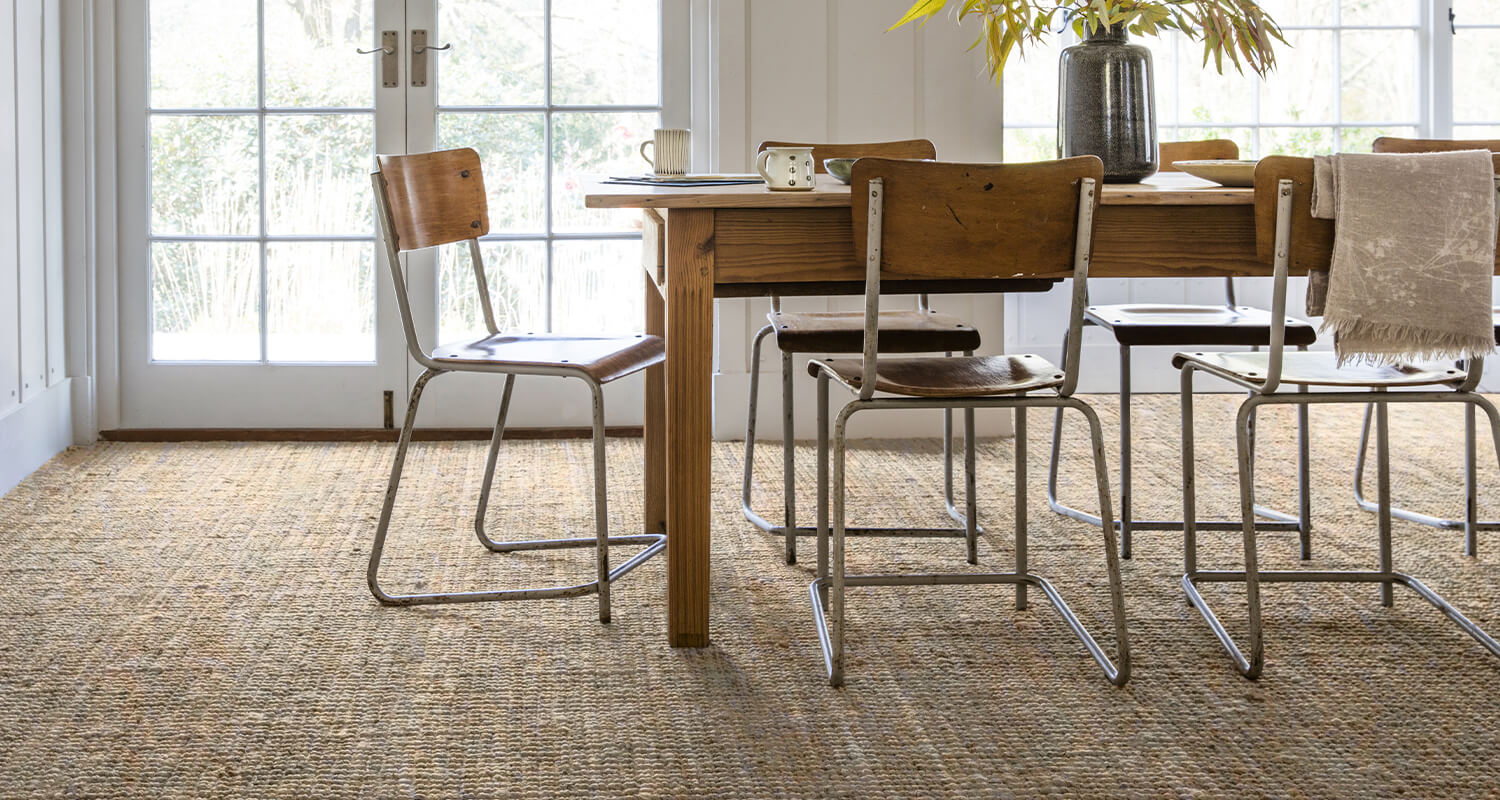 Alternative Flooring Jute Big Boucle
Alternative Flooring Jute Big Boucle
How it's made
Jute is made from the inner bark of corchorus plants, which grow to around 3m tall, with long thin stems and leaves at the top. Harvested in South Asia by hand, they’re soaked in flowing water until the long fibres can be separated from the stalk. These are laid in the sun to dry, before being spun into yarns of either white jute or brown jute - the latter being the softer and stronger of the two.
Benefits of jute
Comfortable: the fineness of its fibres mean that jute carpets are extremely soft underfoot, particularly in comparison to sisal and coir. This means you can have the organic, textured appearance without sacrificng comfort.
Renewable: jute is a sustainable resource that grows quickly and in abundance. In fact, jute only takes around 4-6 months to reach full maturity.
Environmentally friendly: biodegradable and carbon-dioxide neutral, jute has low impact on the environment. It is also is a rain fed crop that requires less fertiliser and pesticides than other fibres.
Warm and quiet: jute has a low thermal conductivity and therefore offer provides excellent heat insulation and sound reduction.
Where to use jute
Because of its soft feel (or handle) jute is great in low-traffic areas such as bedrooms and snugs, but best avoided in spaces that see high footfall, like hallways and stairs. It has naturally absorbent qualities, so it’s advisable to keep jute away from moist or damp areas. And to avoid colour-fade, never place jute in strong sunlight, for example, in front of patio doors.
Need to knows
Durability: the fineness of its fibres means that jute is the least durable of all our natural floor coverings, so should be confined to low- or medium-traffic areas to avoid rapid wear.
Colour: jute tends to hold colour well, but it can fade and discolour in strong sunlight.
Variations: because jute is a natural fibre, every roll will be slightly different, so our suppliers carry out quality checks on their products to ensure as much consistency as possible. Any variations or imperfections should be considered part of its charm and aren't faults in the product.
Lifespan: expect jute floor coverings to last up to 5 years, subject to the amount of use and care.
Moisture: jute is naturally absorbent so it is advisable to avoid areas of high moisture or humidity.
Pets: jute holds on to odours more readily than other natural floor coverings, due to its high absorbancy, so may not be the ideal choice for pet owners.
Enter your required size for our most accurate pricing and availability.
